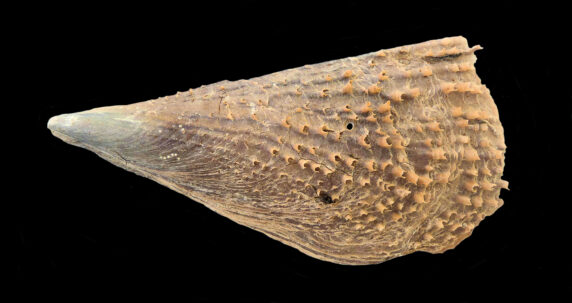 Wrinkled Pen Shell, Pinna rugose
Wrinkled Pen Shell, Pinna rugose
Pens of the Pinnidae Family are bivalve mollusks which are known in Mexico as callo de hacha and also known as Fans. The shells are shaped like a long triangle or wedge that are equivalved (equal in size and shape). There is a significant gap between the valves at the much wider posterior end and they have a long, straight hinge, leading to the pointy anterior end.
Live Pens bury their anterior end in sand, mud or gravel, and attach themselves to the substrate via a byssus. Both valves are thin and even flexible on living specimens. Dry shells are fragile. The exterior surface of the shells may be smooth, radially folded, or heavily scaled. The inside is nacreous (having an iridescent luster).
Pens are suspension feeders, filtering plankton and fine detritus from the surrounding water. Pen Shells can be very large, and up to 95 cm (37 inches) in length. They are preyed upon by shorebirds, crabs, carnivorous mollusks and fish. They are found in shallow water in tropical and semi-tropical seas worldwide.
There are twenty-two species in the Pinnidae Family of which five are found along the coastlines of the Baja Peninsula. Some Pens produce pearls that are of marginal commercial value.